If you’re looking for a new lens to capture stunning shots of the Milky Way, there are a few important factors to consider before making a purchase. First and foremost, you’ll want to ensure that the lens is compatible with your camera model. Additionally, you’ll want to take into account the lens’s focal length, aperture, and overall image quality.
When it comes to focal length, a wider angle lens is generally better for capturing shots of the Milky Way, as it allows you to capture more of the sky in a single frame. In terms of aperture, a lens with a larger maximum aperture (i.e. lower f-stop number) will enable you to capture more light, resulting in brighter and more vivid photos. Finally, you’ll want to assess the overall image quality of the lens, taking into account factors such as sharpness, distortion, and chromatic aberration.
Are you tired of missing out on incredible Milky Way shots because your lens just can’t cut it? Are you looking for a lens that will enable you to capture stunning, crisp images of the night sky? Look no further – in this article we’ll guide you through what to consider when purchasing a new lens for Milky Way photography. From focal length to aperture to overall image quality, we’ll ensure that you’re equipped with all the knowledge you need to choose the perfect lens to capture your night sky dreams. So grab a cup of coffee, sit back, and get ready to learn about the lens of your dreams.
10 Best Lens For Milky Way
| # | Product Image | Product Name | Product Notes | Check Price |
|---|---|---|---|---|
|
1
|
This camera lens is ideal for capturing high-quality images with a wide range of focal lengths and low light capabilities.
|
|
||
|
2
|
This product is ideal for portrait photography with high quality and beautiful bokeh.
|
|
||
|
3
|
Ideal for capturing wide-angle shots on Canon cameras with excellent sharpness, contrast, and distortion control.
|
|
||
|
4
|
This product is ideal for capturing ultra wide angle shots with a Nikon camera.
|
|
||
|
5
|
Ideal for portrait photography and creating a shallow depth of field effect.
|
|
||
|
6
|
Ideal for capturing distant subjects with Canon SLR Cameras.
|
|
||
|
7
|
The product is ideal for capturing high-quality images with full-frame mirrorless Canon cameras.
|
|
||
|
8
|
This product is ideal for capturing high-quality images with a telephoto lens on compatible Canon EOS EF mount cameras.
|
|
||
|
9
|
Ideal for capturing wide-angle shots, portrait photography, and everyday use on cameras with APS-C size sensors.
|
|
||
|
10
|
This lens is ideal for capturing close-up shots with exceptional clarity and detail.
|
|
1. Sigma 18-35mm F1.8 Art Dc Hsm Lens For Canon, Black (210101)
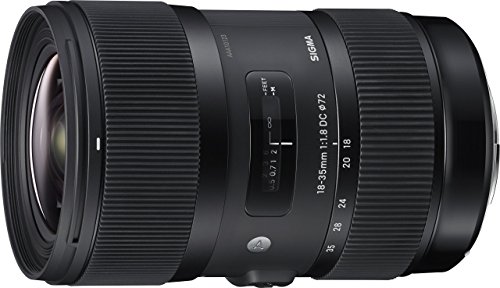
The product is a versatile camera lens available in different mounts including Canon EF (EF-S), Sony Alpha (dot), and Nikon f (DX). It has a maximum aperture of F1.8 and a minimum aperture of F16, making it suitable for different shooting conditions. The lens also features a ring-type ultrasonic-type AF motor, which enables fast and silent autofocus. It has a 72mm filter size and a minimum focusing distance of 28 cm/ 11.0 in. The lens is also USB Dock compatible and MC-11 compatible, making it easy to update its firmware and customize its settings. With its 0.23 optical zoom, it can capture detailed and sharp images from different distances.
This camera lens is a great addition to any photographer's gear. Its wide aperture makes it perfect for low-light photography, while its fast and silent autofocus ensures that every shot is captured quickly and accurately. The lens's compatibility with different mounts also makes it a versatile choice for photographers who use different camera brands. The 72mm filter size and minimum focusing distance of 28 cm/11.0 in provide more options for creative and unique shots. The USB Dock compatibility and MC-11 compatibility also make it easy to update and customize the lens's settings.
Overall, this camera lens is a great investment for photographers who want a versatile and reliable lens that can capture stunning images in different shooting conditions.
- Wide aperture for low-light photography
- Fast and silent autofocus
- Compatibility with different mounts
- Minimum focusing distance of 28 cm/11.0 in
- USB Dock compatibility and MC-11 compatibility
- 0.23 optical zoom
2. Canon Rf50mm F 1.2l Usm Lens, Black
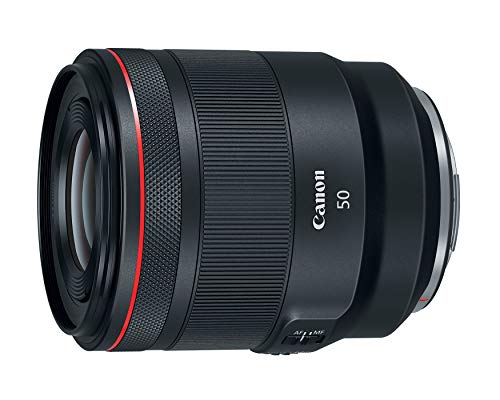
The Canon RF 50mm f/1.2L USM Lens is an excellent addition to the EOS R system, featuring a fixed focal length and high image quality. The bright f/1.2 aperture allows for stunning bokeh and low-light performance, making this lens perfect for portraits and artistic shots.
With a minimum focusing distance of 1.31 ft. /0.40M, photographers can capture up-close details with sharp focus. The lens also features a 77mm filter size, making it easy to use with a variety of filters.
The control ring on the lens allows for direct setting changes, giving photographers greater control and convenience. The lens also boasts three aspherical elements and one UD element, ensuring high image quality and sharpness throughout the frame.
The 12 pin communication system ensures fast and accurate autofocus, while the Canon RF mount provides a secure and stable connection to the camera body. With built-in Wi-Fi technology, photographers can easily share their images on social media and other online platforms while on the go.
- High image quality and sharpness
- Bright f/1.2 aperture for excellent low-light performance
- Control ring for direct setting changes
- 12 pin communication system for fast autofocus
- Built-in Wi-Fi for easy sharing
- – Fixed focal length may not be suitable for all types of photography
3. Samyang Sy14m-C 14mm F2.8 Ultra Wide Fixed Angle Lens For Canon , Black
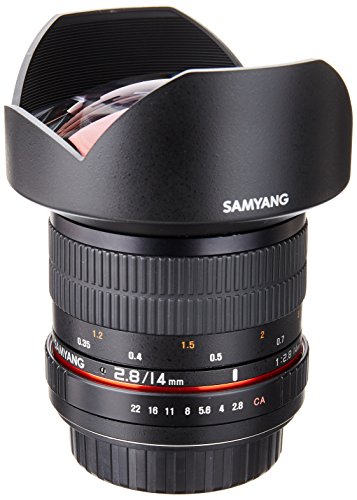
The Ultra-wide angle of view is now available on both full-frame and APS-C cameras with the Focal Length of 14mm. This lens has a minimum focusing distance of only 0.9ft, making it perfect for capturing stunning images up close. The lens features a built-in petal-type hood to protect the front element from glare and lens flare. The lens also comes equipped with a super multi-layer coating which helps reduce flares and ghost images, resulting in sharp and clear images. It has a Closest Focus Distance of 10.8 inches, which allows you to capture even the smallest of details with precision. The lens is not zoomable, which means you will have to physically move closer or farther away from the subject to adjust the framing.
This lens is constructed with superior build quality, making it durable and long-lasting. With its excellent construction, you can be assured of razor-sharp images every time you use it. Whether you are a professional photographer or an enthusiast, this lens is perfect for capturing landscapes, architecture, and interiors. The lens produces images with exceptional contrast and color rendering, making it ideal for capturing stunning images in any lighting condition.
- Ultra-wide angle of view on both full-frame and APS-C cameras
- Minimum focusing distance of only 0.9ft
- Super multi-layer coating to reduce flares and ghost images
- Closest Focus Distance of 10.8 inches
- Excellent construction and superior build quality
- Produces sharp images with exceptional contrast and color rendering
- – Not zoomable
4. Samyang Sy14mae-N 14mm F2.8 Ultra Wide Angle Lens For Nikon Ae
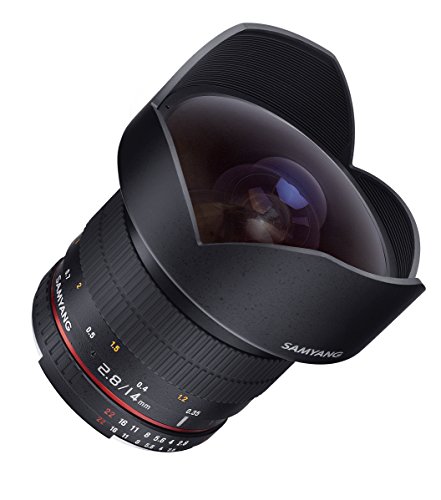
Capture stunning ultra-wide angle shots with this lens on both full frame and APS-C cameras. The lens boasts a minimum focusing distance of only 0.9 ft, allowing you to get up close to your subjects. The built-in petal type hood ensures that stray light does not affect image quality. The lens features a super multi-layer coating which helps to reduce flares and ghost images, allowing you to capture sharp and clear images in any lighting condition. The construction of the lens is of superior build quality, ensuring that your lens lasts for years to come. Whether you're a professional photographer or a hobbyist, this lens is a must-have for your kit.
Capture stunning ultra-wide angle shots with this lens on both full frame and APS-C cameras. The lens boasts a minimum focusing distance of only 0.9 ft, allowing you to get up close to your subjects. The built-in petal type hood ensures that stray light does not affect image quality. The lens features a super multi-layer coating which helps to reduce flares and ghost images, allowing you to capture sharp and clear images in any lighting condition. The construction of the lens is of superior build quality, ensuring that your lens lasts for years to come. Whether you're a professional photographer or a hobbyist, this lens is a must-have for your kit.
- Ultra-wide angle of view on both full frame and APS-C cameras
- Excellent construction and superior build quality for razor sharp images
- Built-in petal type hood to prevent stray light affecting image quality
- Super multi-layer coating to reduce flares and ghost images
- Minimum focusing distance of only 0.9 ft allows you to get up close to your subjects
5. Canon Ef 50mm F/1.8 Stm Lens
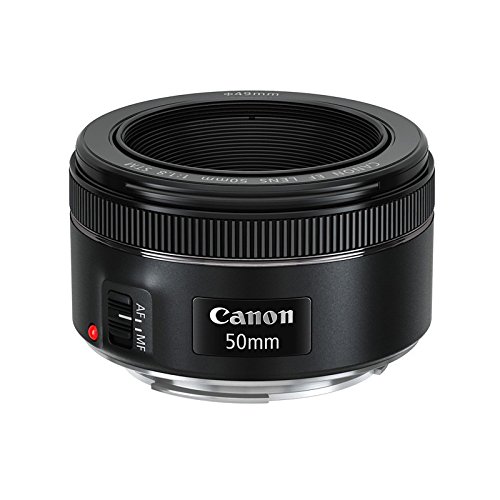
The 50 millimeter focal length and maximum aperture of f/1.8 makes this lens an excellent choice for capturing stunning portraits, fast-action shots, and low-light photography. With a horizontal, vertical, and diagonal angle of view of 40º, 27º, and 46º, respectively, this lens allows for versatile shooting options. It has a minimum focusing distance of 1.15 feet (0.35 meters) and a maximum magnification of 0.21x, making it possible to capture stunning close-up shots with great detail.
Equipped with a stepping motor (STM), this lens delivers near-silent, continuous move Servo AF for movies and smooth AF for stills. The 80 millimetre effective focal length on APS C cameras and 50 millimetre on full frame cameras make it versatile and suitable for a wide range of shooting styles. The lens construction features 6 elements in 5 groups, which ensures high-quality images with excellent contrast and sharpness.
Overall, this lens is an excellent choice for photographers who are looking for a high-quality, versatile lens that delivers outstanding performance in a wide range of shooting scenarios.
- 50 millimeter focal length and maximum aperture of f/1.8 is perfect for portraits, action, and nighttime photography
- Stepping motor (STM) delivers near-silent, continuous move Servo AF for movies and smooth AF for stills
- 80 millimetre effective focal length on APS C cameras, 50 millimetre on full frame cameras
- Lens construction features 6 elements in 5 groups, ensuring high-quality images with excellent contrast and sharpness
6. Canon Ef 75-300mm F/4-5.6 Iii Telephoto Zoom Lens For Canon Slr Cameras, 6473a003 (Renewed)
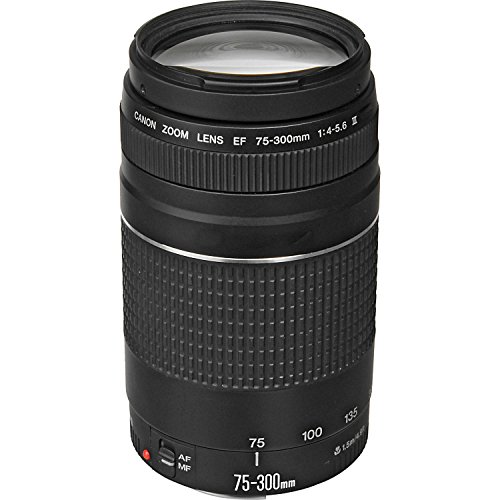
The EF mount lens is a versatile and compact lens that is perfect for everyday use. It has a wide aperture range of f/4-45, which allows for flexibility in low light conditions. The lens also features a DC autofocus motor, which ensures fast and accurate focusing.
One of the standout features of this lens is its 4.9-foot minimum focus distance. This allows for close-up shots with excellent detail and clarity. The lens also has a 58mm filter thread diameter, which is a standard size for many filters.
With a 32- to 8-degree diagonal angle of view, the lens is suitable for a wide range of photography styles. Additionally, it measures 2.8 inches in diameter and 4.8 inches long, making it a compact and portable option for photographers on the go. The lens weighs 16.8 ounces, making it lightweight and easy to carry.
The lens features an improved mechanism that makes zooming smoother, allowing for more precise control. The front part of the zoom ring sports a silver ring, which adds a touch of style to the lens.
Overall, the EF mount lens is an excellent choice for photographers who want a versatile and high-quality lens for everyday use. With its fast autofocus, close focusing distance, and compact size, it is sure to be a valuable addition to any photographer's kit.
- Wide aperture range for flexibility in low light conditions
- DC autofocus motor ensures fast and accurate focusing
- 4.9-foot minimum focus distance for close-up shots with excellent detail
- Compact and portable design for photographers on the go
- Improved mechanism for smoother zooming and more precise control
- – N/A
7. Full Frame Magic: Canon Rf50mm F1.8 Stm
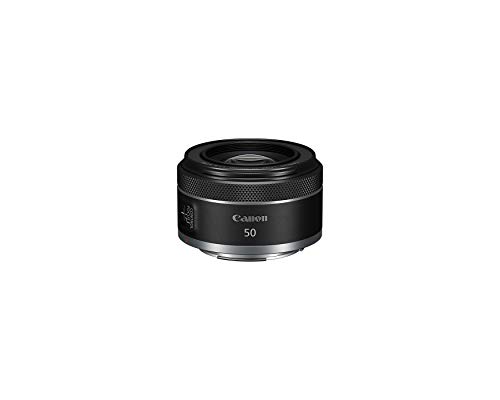
The Compact and Lightweight Fixed 50 millimeter Focal Length Lens is an ideal choice for photographers who want to capture sharp and clear images. With its large F, 1.8 Aperture, low-light photography is made easier while creative background blur is possible. The lens is equipped with a Stepping Motor (Gear-Type STM) which provides smooth and quiet continuous AF during video recording and when shooting photos. The Control Ring allows for direct setting changes, making it easier for photographers to adjust settings and capture their desired shots. The lens has optimized lens placement and coatings which help deliver outstanding color balance, while minimizing ghosting and flare. It is compatible with the Mirrorless R System (EOS RP, EOS R, EOS R5, or EOS R6). This lens is perfect for those who want to take their photography to the next level.
The Compact and Lightweight Fixed 50 millimeter Focal Length Lens is a perfect addition to your photography gear. With its large F, 1.8 Aperture, you can take advantage of low-light photography and achieve creative background blur. Its Stepping Motor (Gear-Type STM) ensures that you can have smooth and quiet continuous AF during video recording and when shooting photos. The Control Ring allows for direct setting changes, making it easier for photographers to adjust settings and capture their desired shots. The optimized lens placement and coatings help deliver outstanding color balance, while minimizing ghosting and flare. It is compatible with the Mirrorless R System (EOS RP, EOS R, EOS R5, or EOS R6). This lens is perfect for photographers who want to achieve high-quality images.
If you are in search of a lens that can take your photography to the next level, then the Compact and Lightweight Fixed 50 millimeter Focal Length Lens is the perfect choice. With its large F, 1.8 Aperture, low-light photography is made easier while creative background blur is possible. The Stepping Motor (Gear-Type STM) provides smooth and quiet continuous AF during video recording and when shooting photos. The Control Ring allows for direct setting changes, making it easier for photographers to adjust settings and capture their desired shots. The optimized lens placement and coatings help deliver outstanding color balance, while minimizing ghosting and flare. It is compatible with the Mirrorless R System (EOS RP, EOS R, EOS R5, or EOS R6). This lens is a must-have for photographers who want to capture high-quality images.
- Large F, 1.8 Aperture for low-light photography.
- Stepping Motor (Gear-Type STM) provides smooth and quiet continuous AF during video recording and when shooting photos.
- Control Ring allows for direct setting changes.
- Optimized lens placement and coatings help deliver outstanding color balance, while minimizing ghosting and flare.
- Compatible with the Mirrorless R System (EOS RP, EOS R, EOS R5, or EOS R6).
8. Full Frame Telephoto Lens For Canon Eos
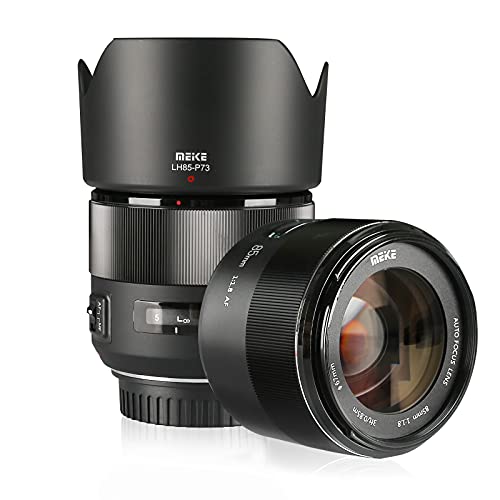
The lens has a 67mm filter size and a minimum focus distance of 0.85m. The aperture range is from F/1.8 to F/22, and the lens construction consists of 6 groups of 9 pieces. It provides a full-frame view with a level of 16 degrees, vertical of 24 degrees, and diagonal of 28.5 degrees. The lens also has electronic contacts and a USB connection for firmware upgrades. It is perfect for a variety of photography genres, including architecture, landscapes, portraits, sports, and theatre photography.
- Wide aperture range
- Full-frame view
- USB connection for firmware upgrades
- Suitable for a variety of photography genres
9. Canon Ef-S 18-55mm F/3.5-5.6 Is Ii Slr Lens White Box
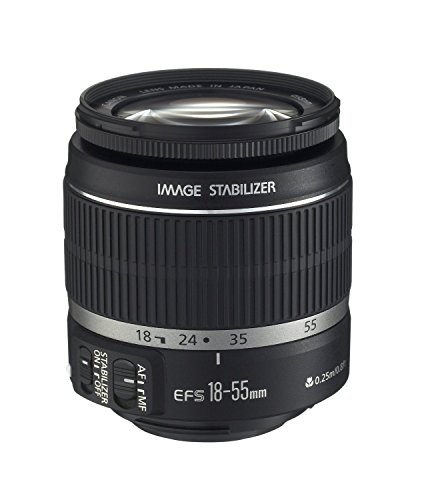
The 18-55mm f/3.5-5.6 II lens is a versatile and reliable option for photographers looking for an affordable all-purpose lens. With a focal length range of 18-55mm, it can handle a variety of shooting situations, from wide-angle landscapes to medium-range portraits.
The lens construction consists of 16 elements in 12 groups, including UD-glass and spherical lenses. This helps to produce sharp and clear images with minimal distortion or color fringing. The maximum aperture of f/3.5-5.6 allows for good low-light performance and creative control over depth of field.
This lens is designed for use with APS-C image sensors, providing a diagonal angle of view of 74 20' – 7 50'. The focus adjustment is gear-driven, allowing for precise and smooth focusing. This makes it a great option for photographers who want to capture fast-moving subjects, such as sports or wildlife.
The lens comes in bulk packaging and is delivered in a white box with a card. This is a great option for those who are looking for a budget-friendly lens without compromising on quality.
- Affordable all-purpose lens
- Sharp and clear images with minimal distortion
- Good low-light performance
- Precise and smooth focusing
- Great for capturing fast-moving subjects
- – Limited maximum aperture compared to more expensive lenses
- – Not suitable for full-frame cameras
10. Canon Ef 100mm F/2.8l Is Usm Macro Lens For Canon Digital Slr Cameras, Lens Only
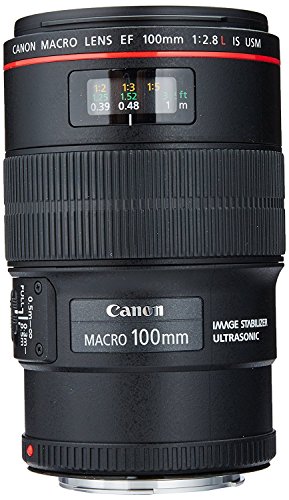
The Canon EF 100mm f/2.8L IS USM Macro Lens is a mid-telephoto macro lens with a 100 millimeter focal length and a maximum aperture of 1:2.8, providing excellent image quality and clarity for close-up photography. This lens has a construction of 15 elements in 12 groups, a 23.4-degree diagonal angle of view, and an inner focusing system with USM and a full-time manual focus option.
With a closest focusing distance of 0.99 feet or 0.3 meters, this lens has a maximum close-up magnification of 1x, allowing you to enjoy life-size close-up capabilities without needing an adapter. This lens has a filter size of 67 millimeters and comes with a lens hood of ET-73. The lens is also compatible with 67 millimeter filters.
The Canon EF 100mm f/2.8L IS USM Macro Lens is Canon's first mid-telephoto macro 'L' series lens to include Canon's sophisticated Image Stabilization. This feature enables you to capture sharp handheld images, even in low light conditions, without having to use a tripod. Additionally, the lens has near-silent Ultrasonic focusing, which provides you with fast, accurate, and quiet autofocus, making it perfect for use in any shooting situation.
Please note that this lens cannot be used with the EF1.4X II; EF2X II extenders, nor are there any compatible close-up lenses available. However, with its excellent image quality, versatility, and advanced features, the Canon EF 100mm f/2.8L IS USM Macro Lens is a great choice for anyone looking to capture stunning close-up photographs.
- Excellent image quality and clarity for close-up photography
- Sophisticated Image Stabilization for sharp handheld images in low light conditions
- Near-silent Ultrasonic focusing for fast, accurate, and quiet autofocus
- Life-size close-up capabilities without needing an adapter
- – Cannot be used with the EF1.4X II; EF2X II extenders
- – No compatible close-up lenses available
Best Lens For Milky Way FAQs
Can I use a wide-angle lens for capturing the Milky Way?
Yes, you can use a wide-angle lens for capturing the Milky Way. In fact, a wide-angle lens is the most commonly used lens for astrophotography, including Milky Way photography. This is because a wide-angle lens allows you to capture a wider area of the night sky, including the Milky Way and its surrounding stars, in a single shot.
However, it's important to choose the right wide-angle lens for Milky Way photography. Look for a lens with a wide aperture, such as f/2.8 or wider, to allow more light into your camera's sensor. This will help you capture more detail and color in the Milky Way and its surrounding stars.
You should also consider the focal length of the lens. A focal length of around 14-24mm is ideal for capturing the Milky Way, as it allows you to capture a wide area of the night sky without distorting the stars or the Milky Way itself.
Overall, a wide-angle lens is a great choice for capturing the Milky Way, but make sure you choose the right lens for the job and understand how to use it effectively.
How does the focal length of a lens affect Milky Way photography?
The focal length of a lens plays a crucial role in Milky Way photography. The longer the focal length, the narrower the field of view, which means that the lens can capture a smaller area of the sky. This makes it easier to capture the details of the Milky Way and other celestial bodies, as they will appear larger and more detailed in the frame.
On the other hand, a shorter focal length will provide a wider field of view, which can be useful for capturing a larger portion of the night sky. However, this can also make it more difficult to capture the details of the Milky Way, as the stars and other objects will appear smaller and less defined in the frame.
There is no right or wrong focal length for Milky Way photography, as it ultimately depends on the photographer's creative vision and the specific scene being captured. Some photographers prefer to use a wide-angle lens to capture a sweeping landscape with the Milky Way as a backdrop, while others may opt for a longer lens to zoom in on specific features of the galaxy. Ultimately, the choice of focal length should be based on the photographer's artistic goals and technical considerations such as the camera's sensor size and aperture settings.
Is a prime or zoom lens better for Milky Way photography?
When it comes to Milky Way photography, both prime and zoom lenses can be used to capture stunning images of the night sky. However, there are certain advantages and disadvantages to each type of lens that should be considered before making a decision.
Prime lenses are typically preferred by astrophotographers due to their wider aperture and superior image quality. They also tend to be lighter and more compact, making them easier to carry around and set up for a shoot. However, the fixed focal length of a prime lens can limit your framing options and require you to physically move around to capture different angles.
On the other hand, zoom lenses offer greater flexibility in terms of focal length and framing options. They also tend to be more versatile and can be used for a wider range of photography styles beyond astrophotography. However, zoom lenses typically have a narrower aperture and may not produce the same level of image quality as a prime lens.
Ultimately, the choice between a prime or zoom lens for Milky Way photography depends on your personal preferences and shooting style. If you prioritize image quality and low-light performance, a prime lens may be the better option. If you value versatility and flexibility, a zoom lens may be more suitable for your needs.
What aperture should I use for shooting the Milky Way with my lens?
When shooting the Milky Way with your lens, the aperture you use is crucial. The ideal aperture to use is between f/2.8 and f/4.0. This is because these apertures allow more light into your camera, which is necessary for capturing the brightness of the Milky Way. A wider aperture than f/2.8 is not recommended as it can cause distortion and reduce the sharpness of the image. On the other hand, a smaller aperture than f/4.0 may not allow enough light to enter the camera, resulting in a dark or underexposed image.
It's also important to note that the aperture you use will depend on the type of lens you have. For example, if you have a zoom lens, the maximum aperture may vary depending on the focal length. It's best to experiment with different apertures to see which works best for your particular lens and camera.
Lastly, when shooting the Milky Way, it's important to use a tripod and a remote shutter release to prevent camera shake and ensure a sharp image. With the right aperture and equipment, you'll be able to capture a stunning photograph of the Milky Way.
What is the best lens for photographing the Milky Way?
The Milky Way is a breathtaking sight in the night sky, and capturing its beauty requires the right lens. The best lens for photographing the Milky Way is a wide-angle lens with a large aperture. A wide-angle lens allows you to capture more of the night sky, while a large aperture lets in more light, enabling you to capture the stars in greater detail.
A popular choice among photographers is the Rokinon 14mm f/2.8 lens. This lens offers a wide angle of view and a large aperture, making it an excellent choice for photographing the night sky. Another great option is the Sigma 14mm f/1.8 DG HSM Art lens. This lens has a wider aperture than the Rokinon, making it perfect for low-light conditions.
When choosing a lens for photographing the Milky Way, it's important to consider the focal length, aperture, and image quality. A wide-angle lens with a large aperture and good image quality will give you the best results. Additionally, it's important to use a sturdy tripod and a remote shutter release to avoid camera shake and get sharp, clear images of the Milky Way.

